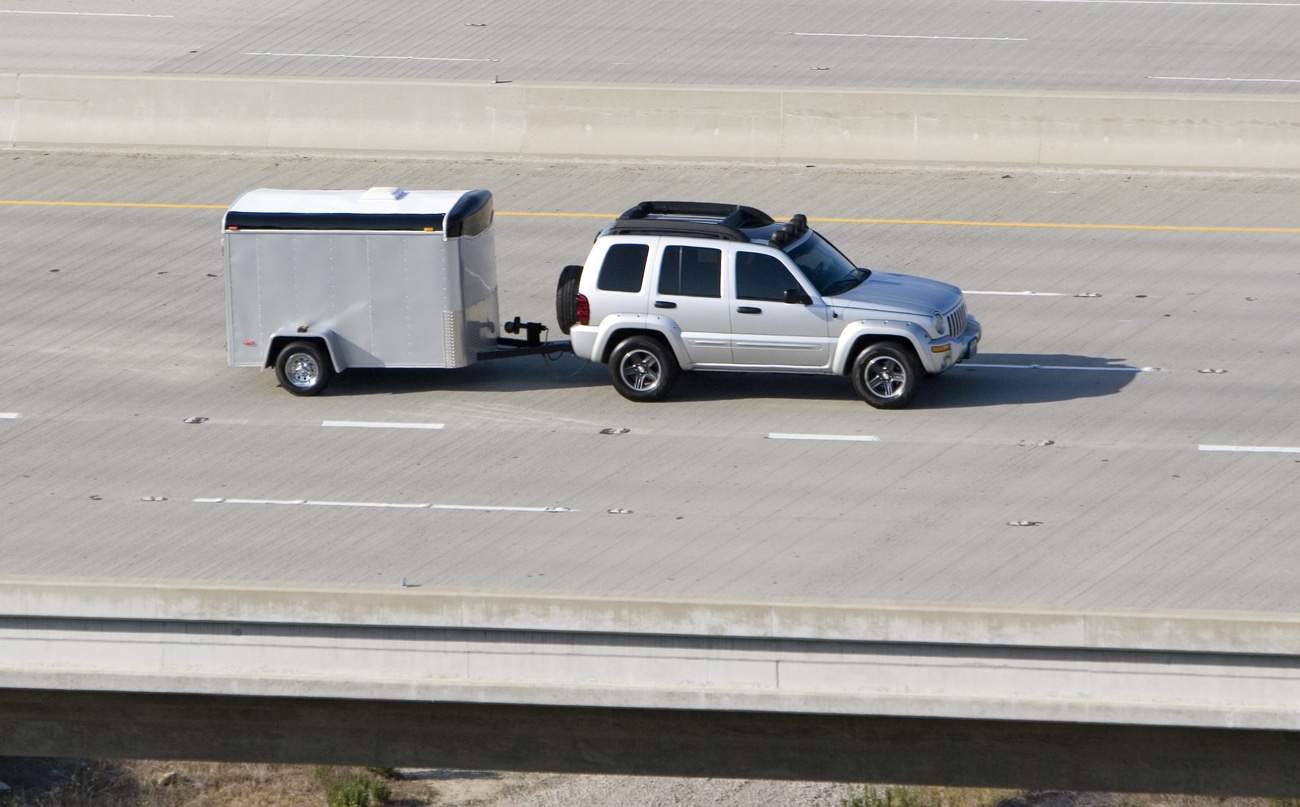How To Stop Your Trailer From Swaying On The Road

Whether your towing debris from a DIY home improvement project, trailering horses, or headed out an an RV vacation don’t make your trip too exciting with a swaying, swerving, out of control trailer. Sway is the bogeyman of novice towers and the nemesis of those tackling winding mountain roads and sharing byways with 18-wheelers.
Learn to master the impacts of trucks and bad weather that are unavoidable and take steps before you head out and while you’re driving to avoid preventable sway, or fishtailing, while on the road.
A fishtailing trailer is a leading cause of towing accidents and are almost always preventable by setting up your trailer properly and driving mindfully.

Before you go
Stopping your trailer from swaying begins before you go the first mile. Proper load distribution and paying attention to tongue weight can prevent trailer sway before you drive your first mile.
There are several issues to weigh before setting off safely. Be sure the total weight of your loaded trailer does not exceed the capacity of your towing vehicle. A trailer too heavy for its towing vehicle will push the vehicle, especially on downhills, be difficult to stop and will lead to dangerous trailer sway.
Check the tongue weight – the weight of the trailer that presses down on the hitch. Too much tongue weight can cause many problems, including difficult handling for lack of weight on the front wheels of the towing vehicle — but too little tongue weight will lead to serious sway. Generally, the tongue weight should be 10 to 15 percent of the total weight of your loaded trailer.
Whether it’s a travel trailer or utility trailer, proper weight distribution is critical for stopping sway before it starts. According to the National Highway Transportation Safety Administration:
- Balance the weight inside the trailer from side to side
- Distribute weight evenly along the length of your trailer
- Secure and brace all items inside the trailer to prevent shifting during travel.
- Use weight distributing hitch bars for load leveling if necessary.
As you depart, check to be sure the trailer and tow vehicle are level and parallel to the ground, indicating proper weight distribution from front to back.
On the Road
While towing for the long haul, it may be impossible to avoid the impacts of weather, big trucks, and unexpected road hazards, but with a properly hitched and weighted trailer, it is simple to mitigate the impact of a big gust of wind or a sudden stop.
Reduce your risks and the impact of sway by driving at a moderate pace. Speed increases the chance for trailer sway. Leave plenty of room behind the vehicle you’re following to avoid sudden stops and jack-knifed trailers.
While the front of your trailer may be aerodynamically designed, the sides are not. A sharp gust of wind – from weather or a passing semi-tractor trailer — will cause pressure against the side of your trailer causing it to pivot or sway on its hitch. For a properly hitched and loaded trailer with an experienced or tow-smart driver behind the wheel the impact will be minimum. Stay calm, hold the wheel steady and ride out the sway, resisting the temptation to hit the brakes or steer against the sway.
When it’s more than a quick gust or pressure from a passing truck, control your fishtailing trailer with skilled, calm driving. Resist the temptation to hit the brakes; instead lift your foot from the accelerator and hold the wheel steady as the speed decreases. If the trailer is equipped with electric brakes activate the trailer brake controller by hand, according to the NHTSA. Avoid the tow vehicle brakes; it will make the sway worse.
Special Equipment
Many RVers add stability and security with anti-sway bars or weight distribution kits. Sway bars and anti-sway kits come in many shapes and varieties depending on the trailer and tow vehicle combination. In general, anti-sway kits can be dual-cam systems that hook on long bumper-pulled trailers or sway bars that work on the hitch system of the trailer. Both systems help to dynamically distribute the load more effectively to prevent the wild swaying that leads to white knuckle driving.
Weight distribution kits work with the hitch system of your trailer to transfer more the trailer’s weight to the rear axles and rear of the trailer. Weight distribution kits are most effective when the total weight of the trailer is about half the weight of the tow vehicle.
The experts at M&G Trailer in Ramsey, Minn., can help you find the right trailer and accessories for your towing requirements so all your trips are safe and secure.


